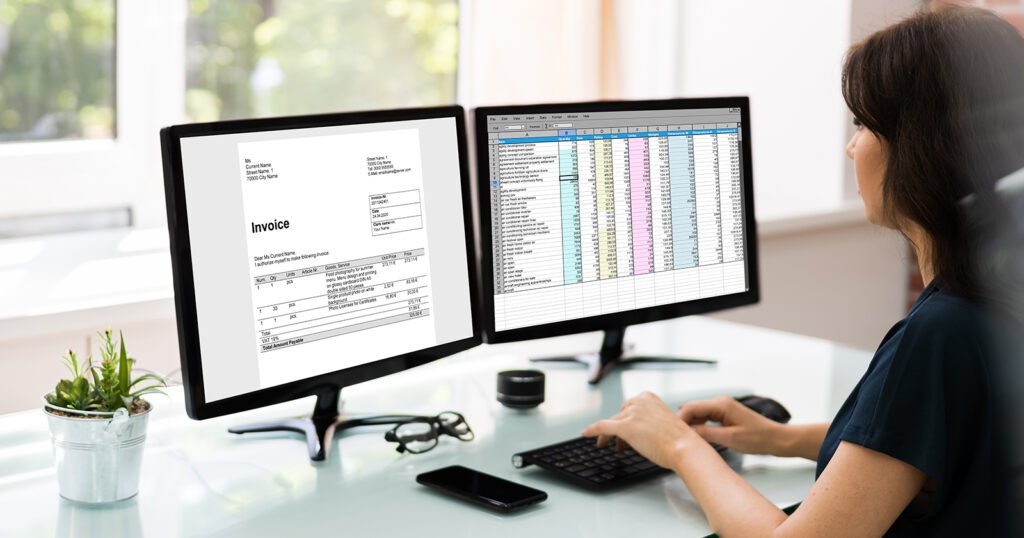The cash flow statement gives a great insight into a company’s cash management. It shows inflows and outflows of money for a specified financial period.
Along with the balance sheet and income statement, the cash flow statement is considered an important section of a set of financial statements. In the accounting world, there are two ways to draft the cash flow statement; the direct method and the indirect method.
We will take a deeper look into the direct method and illustrate it with an example.

The Direct Method: Explained
A cash flow statement contains three sections; the operating activities, investing activities and financing activities. There are two ways to prepare the cash flow statements. A company can choose the direct method or the indirect method.
The investing and financing activities sections will stay the same whether it’s the direct or indirect method. The section that will differ between the direct method and the indirect method is the operating activities.
In the direct method, just like the name suggests, you simply take all the cash inflows and outflows related to the operations of the company and sum them up to arrive at the total cash flows from operating activities.
As such, you will list the income and sales of the company (inflows) and subtract the expenses (outflows). Take this as a very literal approach to listing the actual cash that went in and out of the company for any transactions that are directly related to the core operations.
As you can imagine, the direct method gives a clearer view of the cash receipts and payments of a company but it is far more time-consuming to identify these transactions than using the indirect method.
Difference Between the Direct Method and the Indirect Method
The main difference between the direct method and the indirect method is that the former uses the cash accounting basis and the latter uses the accrual accounting basis.
In the direct method, as we have explained, the focus is to identify the actual operating cash receipts and cash payments during a financial period.
In the indirect method, because the focus is on accrual accounting, we start with the net income of the company taken from the income statement, adjust for any non-cash related transactions (for example: amortization) and adjust for the movement in assets or liabilities between the current financial period to the prior financial period.
Generally speaking, the direct method gives a better picture of cash transactions than the indirect method but is more labor-intensive than the indirect method which makes the indirect method the popular option adopted in the industry.
Read More:
Cash Flow Statement: Demystified & Explained (For Beginners)
The Direct Method: Example

Let’s look at an example at Carl’s Construction Company (“CCC”). Since the investing and financing activities do not differ between the direct and indirect method, we will only focus on the operating activities section.
For the financial year ended 31 December, CCC had the following operational transactions:
- Sales of $206,000 out of which $182,000 has been received in cash
- Interest income received from the cash saved at the bank of $500
- Cost of materials of $72,000 out of which $53,000 has been paid to suppliers
- Salaries for employees accrued for $89,000 and paid out $79,000
- Income taxes paid for an amount of $15,000
The cash flow statement using the direct method would look like the following:
| Cash flows from operating activities: | |
| Cash received from customers | $182,000 |
| Interest received on bank deposits | $500 |
| Cost of materials paid to suppliers | ($53,000) |
| Salaries paid to employees | ($79,000) |
| Income taxes paid | ($15,000) |
| Net cash flows from operating activities | $35,500 |
Cash Flow Statement: the Direct Method Recap and Final Thoughts
The cash flow statement can be generated using the direct method or the indirect method.
- The direct method uses cash basis accounting and tracks the cash inflows and outflows of the operational activities.
- The indirect method uses the concept of accrual accounting and takes the net income of a company as a start and strips away any non-cash transactions while adjusting for balance sheet movements in assets and liabilities.
The direct and indirect method only affects the operating activities of the cash flow statements while the investing and financing activities are the same for both methods.
Since the direct method is more complicated than the indirect method, it is more common for companies to produce the cash flow statements using the indirect method but a cash flow statement that is presented with the direct method paints a better picture of cash transactions of a company.



